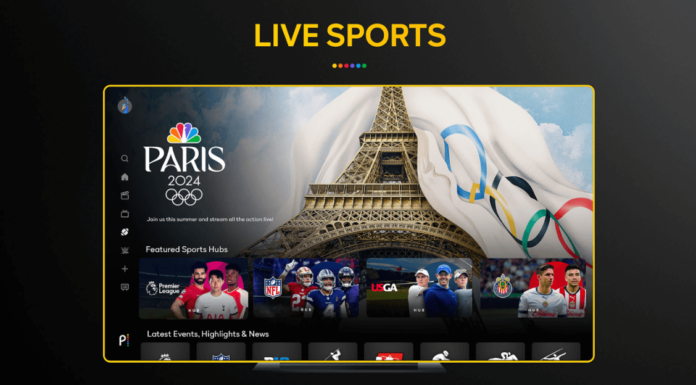Sports and technology have intertwined in fascinating ways, revolutionizing how athletes train, compete, and analyze performance. At the heart of this intersection are wearables and gadgets—innovative devices that provide real-time data, enhance training methodologies, and optimize athletic performance across various sports disciplines. Let’s explore the role of wearables and gadgets in the world of sports, their impact on athletes and teams, and the future of technology-driven advancements in sports performance.
Evolution of Wearables in Sports
The evolution of wearables in sports has been nothing short of revolutionary. From basic fitness trackers to advanced biometric sensors, wearables have become indispensable tools for athletes, coaches, and sports scientists seeking data-driven insights and performance optimizations.
Fitness Trackers: The early days of wearables saw the rise of fitness trackers, which monitored basic metrics like steps taken, calories burned, and sleep patterns. While primarily aimed at general fitness enthusiasts, these devices laid the foundation for more sophisticated wearables tailored to the specific needs of athletes.
Biometric Sensors: The advent of biometric sensors marked a significant leap forward in sports technology. Wearables equipped with heart rate monitors, GPS tracking, accelerometers, and gyroscope sensors provided athletes with real-time data on vital performance metrics such as heart rate variability, speed, distance covered, acceleration, deceleration, and biomechanical movements.
Smart Clothing: The integration of sensors into smart clothing, such as compression shirts, shorts, and socks, allowed for seamless data collection without the need for external devices. These garments measured muscle activity, fatigue levels, posture, and even hydration status, offering comprehensive insights into athletes’ physiological states during training and competition.
Wearable Cameras: Wearable cameras, worn on helmets or goggles, revolutionized sports analysis and coaching by providing first-person perspectives of athletes’ actions and techniques. These cameras enabled coaches to review and analyze athletes’ performances from their point of view, identifying areas for improvement and refining training strategies.
Applications in Sports Performance
The applications of wearables and gadgets in sports performance are vast and multifaceted, offering benefits across training, recovery, injury prevention, tactical analysis, and overall athlete optimization.
Training Optimization: Wearables track athletes’ training loads, intensity levels, and recovery metrics, allowing coaches to tailor training programs, manage workload distribution, prevent overtraining, and optimize performance gains while minimizing injury risks.
Biomechanical Analysis: Biometric sensors and motion capture technologies provide detailed biomechanical analysis, assessing athletes’ movement patterns, running mechanics, jump mechanics, and technique efficiency. This data informs corrective exercises, technique refinement, and injury prevention strategies.
Injury Prevention: Wearables help identify early signs of fatigue, muscle imbalances, and injury risk factors through real-time monitoring of biomechanical data, physiological markers, and training stress. Coaches and medical staff can intervene proactively, implement targeted interventions, and adjust training protocols to prevent injuries and promote athlete wellness.
Performance Tracking: Wearables track performance metrics during competitions, providing insights into athletes’ effort levels, pacing strategies, energy expenditure, and physiological responses in real time. This data informs strategic decisions, game plans, and in-game adjustments for optimal performance outcomes.
Recovery Monitoring: Wearables monitor athletes’ recovery metrics, including heart rate recovery, sleep quality, hydration status, and muscle recovery markers. This information guides recovery strategies, rest periods, nutrition plans, and recovery modalities to enhance recovery efficiency and readiness for subsequent training sessions or competitions.
Emerging Technologies and Innovations
The rapid pace of technological advancements continues to drive innovation in sports wearables and gadgets, ushering in new capabilities, functionalities, and integrations that further enhance athletic performance and sports science research.
Artificial Intelligence (AI) Integration: AI algorithms analyze vast amounts of wearable data, identifying patterns, trends, and correlations that human analysis may overlook. AI-powered insights provide personalized recommendations, performance predictions, and actionable strategies for athletes and coaches.
Virtual Reality (VR) and Augmented Reality (AR): VR and AR technologies immerse athletes in simulated training environments, allowing for interactive skill development, mental rehearsal, tactical simulations, and game scenario training. These immersive experiences enhance decision-making, situational awareness, and cognitive skills in sports settings.
Biofeedback and Neurofeedback: Wearables with biofeedback and neurofeedback capabilities monitor athletes’ physiological responses, cognitive states, and emotional regulation during training and competition. This data helps athletes manage stress, optimize focus, and achieve peak mental performance under pressure.
Wearable Robotics: Exoskeletons, powered suits, and wearable robotics assist athletes in rehabilitation, strength training, and performance enhancement. These wearable devices support mobility, enhance biomechanical efficiency, and facilitate functional movement patterns for athletes recovering from injuries or seeking performance gains.
Genetic Testing and Personalized Medicine: Wearables integrated with genetic testing technologies offer insights into athletes’ genetic predispositions, metabolic profiles, nutritional needs, and injury risks. Personalized medicine approaches leverage wearable data to customize training, nutrition, and recovery strategies based on individual genetic markers and physiological responses.
Ethical Considerations and Data Privacy
As wearables and gadgets become more pervasive in sports, ethical considerations and data privacy concerns arise regarding the collection, storage, and use of athletes’ biometric and performance data.
Informed Consent: Athletes must provide informed consent for the use of wearables and the collection of biometric data, understanding how their data will be used, protected, and shared in compliance with privacy regulations and ethical guidelines.
Data Security: Sports organizations, technology providers, and coaches must prioritize data security measures to safeguard athletes’ sensitive information, prevent data breaches, and ensure data integrity, confidentiality, and ethical use of wearable data.
Transparency: Clear policies, guidelines, and protocols should govern the use of wearables in sports, outlining data ownership, data access rights, data sharing practices, and accountability measures to promote transparency and trust between athletes, coaches, and stakeholders.
Athlete Empowerment: Athletes should have agency and control over their wearable data, with the ability to access, review, and manage their data profiles, insights, and preferences regarding data sharing and usage within ethical boundaries.
Ethical Use of Data: Coaches, sports scientists, and medical professionals should use wearable data ethically, responsibly, and in the best interests of athletes, avoiding misuse, discrimination, or harm resulting from data-driven decisions or interventions.
Future Trends and Implications
Looking ahead, the future of sports wearables and gadgets holds exciting possibilities, with trends and innovations shaping the next generation of sports performance technologies.
Miniaturization and Integration: Wearables will continue to evolve with miniaturized sensors, seamless integration into athletic apparel, and unobtrusive designs that prioritize comfort, performance, and user experience.
Interconnectivity and Data Analytics: Wearables will be part of an interconnected ecosystem, integrating with cloud-based platforms, data analytics tools, and machine learning algorithms to deliver actionable insights, predictive analytics, and prescriptive recommendations for performance optimization.
Biomechanical Feedback Loop: Wearables will enable real-time biomechanical feedback loops, providing athletes with instant feedback on movement efficiency, technique corrections, and performance adjustments during training sessions and competitions.
Personalized Training Programs: Wearable data will inform personalized training programs, recovery protocols, nutrition plans, and lifestyle interventions tailored to athletes’ individual needs, goals, and physiological profiles for optimized performance outcomes.
Health Monitoring and Wellness: Wearables will expand beyond performance metrics to monitor athletes’ overall health, wellness, and longevity, detecting early signs of health issues, managing chronic conditions, and promoting holistic well-being in sports.
Conclusion
The intersection of sports and technology through wearables and gadgets represents a transformative era in sports performance, coaching methodologies, and athlete empowerment. As wearables continue to evolve, their impact on sports will extend beyond performance enhancements to encompass holistic athlete development, injury prevention, health optimization, and data-driven insights that redefine the boundaries of human potential in sports. Embracing the ethical considerations, privacy safeguards, and responsible use of wearable technologies will ensure that sports continue to benefit from the transformative power of technology while upholding ethical standards, athlete welfare, and the integrity of sports competition.






















